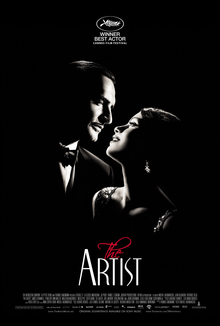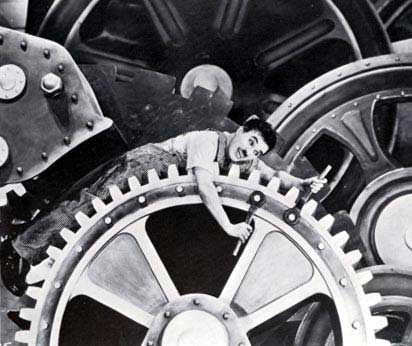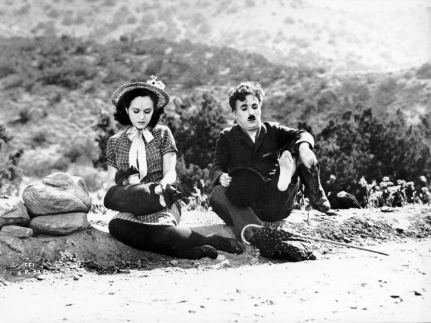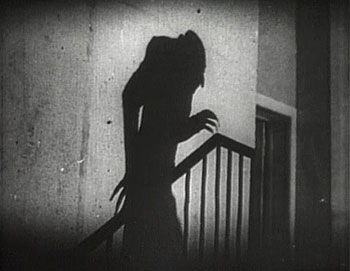 #1142- The Artist (2011)
#1142- The Artist (2011)Starring: Jean Dujardin, Bérénice Bejo, John Goodman
Directed by: Michael Hazanavicius
Plot Summary: It's 1927 and the biggest name in the silent film industry is filmmaker George Valentin. While taking pictures with fans, George meets Peppy Miller, who is trying to be the newest starlet in the business. As Peppy's popularity increases, the demand for silent films decreases. Recently divorced and bankrupt, George still has hope for silent films and does not want to cope with the possibility that the genre he loves could be extinct. To add to the situation, George is torn about his feelings for Peppy, with part of him wanting to love her, and the other part jealous that she is in the spotlight that was once his.
When The Artist won the Academy Award for Best Picture in 2011, only one question was in my head, "Is there really still a demand for silent films?" I was confused, not understanding with all the films that were out there that year how a film with no sound could have been named the best film of the year. After reviewing many films from the silent era, my appreciation for it has grown. So, I thought it would be a good time to sit down and watch The Artist, and see two things: if it was deserving of winning Best Picture and if a modern film is able to serve as a fitting tribute to the silent era.
 The main character of The Artist is George Valentin, played by Jean Dujardin. After sitting through Buster Keaton and Charlie Chaplin's films, it's easy for me to see that Valentin is supposed to represent what they were able to do during the era, being able to entertain as both a filmmaker and as a leading man. Dujardin is able to give George a natural screen presence that makes him easily likable. His charisma is able to keep the audience captivated on his story throughout the film, and his interactions with his dog Jack are darn adorable. My favorite part about George, and Dujardin's performance, is that he isn't one dimensional. I know that I was able to empathize with him as much as I could laugh with him.
The main character of The Artist is George Valentin, played by Jean Dujardin. After sitting through Buster Keaton and Charlie Chaplin's films, it's easy for me to see that Valentin is supposed to represent what they were able to do during the era, being able to entertain as both a filmmaker and as a leading man. Dujardin is able to give George a natural screen presence that makes him easily likable. His charisma is able to keep the audience captivated on his story throughout the film, and his interactions with his dog Jack are darn adorable. My favorite part about George, and Dujardin's performance, is that he isn't one dimensional. I know that I was able to empathize with him as much as I could laugh with him.George's love interest is Peppy Miller, played by Bérénice Bejo. Peppy is just what you'd imagine her to be, peppy. There's not really a whole lot of depth to her character. You can tell she loves George and wants to be a star, and that's about all we get from her. She pretty much captures the era's perception of female characters, like what you would see in Sherlock, Jr. or Modern Times, which I suppose makes for a good representation for the era, but doesn't translate well when looking at a modern actress trying to breakthrough in a modern film.
When looking at a modern silent film, I couldn't help but notice the film quality due to modern technology. I actually think that hurts the film in trying to be a modern representation of a silent film. If it was trying to look like the era, I'm sure there's a type of filter, or even using old film, that would have helped it feel of the era, and ironically, give it a timeless quality to it. Making it look so crisp and pristine only reminds me that I'm looking at a film from the modern era. If the filmmakers wanted to dazzle me, making it look as accurate as a film from the 1920s would have given The Artist depth and dedication towards its tribute to silent films.
There's a minor controversy about whether or not this film serves as a fitting tribute to the silent era. While it visually captures the silent era, it is in the story's resolution that ultimately sparks debates about what it is trying to say. I think that there are two sides of history involved here. On one side, there is the idea of preserving what is popular at the time, but the other side is about the evolution of an art form. The ending gives what I think is a nice compromise of the two ideas. Both are presented, and historically, we know how it is going to play out, but there is still hope for films, like The Artist, to show us that we can still appreciate silent films.
Rating: 4 out of 5 stars
The Artist had me entertained, but I think it could have benefited by cutting down some of the smaller scenes for time in order to convey the main plot. Nevertheless, it was a film that got a lot of people talking in 2011 for its modern use of the silent style, so I think it's worth everyone seeing once to formulate an opinion on whether or not there is a place for modern silent films in today's cinema.
Comment below to share your thoughts on the movie or to discuss a topic that I left out of my review
The Artist and movie images are copyrighted by Warner Bros., The Weinstein Company, and Entertainment Film Distributors



















